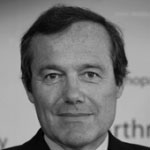
Meet Gilles Walch
Hello Gilles Walch. Could you briefly introduce yourself?
Gilles Walsh: I’m 65 and I’m an orthopaedic surgeon. For over 30 years I’ve specialized in shoulder surgery. I practice in Lyon, France.
How did you become a shoulder specialist?
GW: At the end of my training, I took the advice of my mentor, Pierre Chambat and I went to the USA. At the time, I intended to go into knee surgery. It was my experience in America that drew me to shoulder specialization; it was still unheard of in Europe. It was just getting started. When I came back to France I gradually set up pluridisciplinary teams with Rheumatologists, Radiologists, Physiotherapists, Rehab Doctors and other orthopaedic surgeons, in particular within the Duplay group.
Since 1996, I have worked exclusively on the shoulder.
What are the breakthroughs that most captured your imagination, and why?
GW: In my opinion, there are two major breakthroughs that have marked the history of our specialization.
Latarjet’s intervention: the bone block procedure. He described this procedure in 1954. It remains to this day one of the most trusted procedure worldwide for the treatment of anterior instability.
Grammont’s Reverse prosthesis in 1991. Revolutionary, but not without its detractors at the beginning, it solved the problems that could not be resolved by the NEER prosthesis. Reverse Prosthesis is still to this day the most used prosthesis in shoulder surgery around the world.
And beyond these breakthroughs, there are men who have had a great impact on our domain.
Laurent Lafosse shed new light on arthroscopy. Pascal Boileau, at the head of the Ecole Niçoise, brought great scientific rigour with his international publications. Philippe Valenti, who, with his training on upper limbs, democratized the practice of nerve surgery and tendon transfers around the shoulder.
What do you think of this new platform, Shoulder 3T?
GW: It’s an excellent initiative that will add to our community.
First of all it’s a way to train our young student doctors as well as those already practising. Via this platform, they’ll be able to access procedures, and be reminded of up-to-date methods. It has a really educational dimension.
I also see there’s an « exchange zone » where experienced surgeons can talk about their methods.
Finally, I think that Shoulder3T can become a « place of memory » in which we can review our current practices over time, and thus learn from our successes but also from our failures.
What do you think of this new platform, Shoulder 3T?
GW: It’s an excellent initiative that will add to our community.
First of all it’s a way to train our young student doctors as well as those already practising. Via this platform, they’ll be able to access procedures, and be reminded of up-to-date methods. It has a really educational dimension.
I also see there’s an « exchange zone » where experienced surgeons can talk about their methods.
Finally, I think that Shoulder3T can become a « place of memory » in which we can review our current practices over time, and thus learn from our successes but also from our failures.
On the 6th June, you will perform an operation filmed and streamed live. Can you tell us a bit about it?
She is a 83yo woman, right dominant shoulder, rupture of Supra+Infraspinatus. She complains about severe pain (day and night) Active forward elevation is 60°(passive elevation is complete)is , active external rotation at side is 0°, active external rotation at 90° of abduction is 90°, active Internal rotation is L1. Regarding strength, positive jobe Test, weakness in external rotation at side, Press-belly test is good and strength in external rotation at 90° abduction is also correct.
Plain X-Ray A/P view in neutral rotation shows slight upward migration of the HH, MRI shows ruptures of Supra and Infraspinatus, Fatty infiltration is grade 2 for both muscles.
In summary she is a 83 yo woman, active complaining of severe night pain and typical pseudo-paralytic shoulder probably related to severe pain (painful arc). Two options were discussed with this patient: either tenotomy of the LHB + prtial repairof the cuff or Reverse prosthesis. She elected to have Reverese SA done to solve definitely her problem.
A standard CT Scan was ordered to perform a 3-D preoperative planning: glenoid is type E0 according to Favard ( superior humeral head migration with no glenoid erosion ), retroversion is 3°, inclination is 13° superior and subluxation of the HH is 54% (neutral). . I will use an Ascend FLEX Reversed TSA. In order to avoid notching (impingement in extension and ext rotation), the best configuration is BIO-RSA with asymmetric HH bone graft to correct the superior inclination and lateralize the sphere. Glenoid baseplate 29mm diameter with 25mm long post, 39mm/2mm eccentric sphere. Humeral stem size 2 with 135° Neck Shaft Angle (see the preop planning movie recorded). A PS guide was ordered to make sure I will be able to reproduce intra-operatively the exact same posionning of the glenoid. (see the report of the preop planning).
